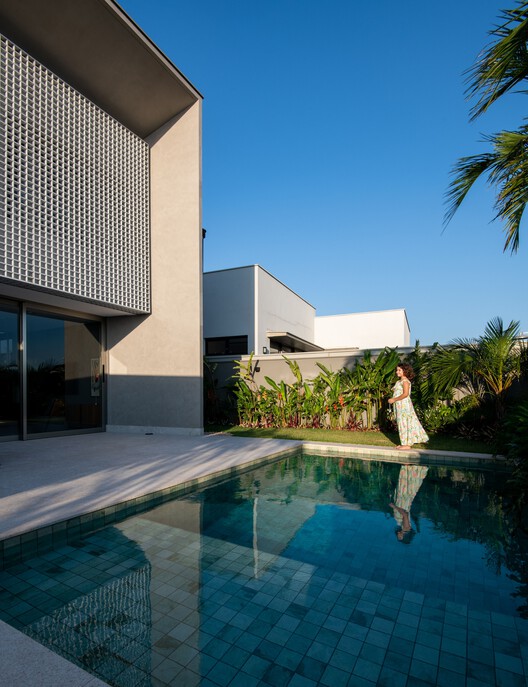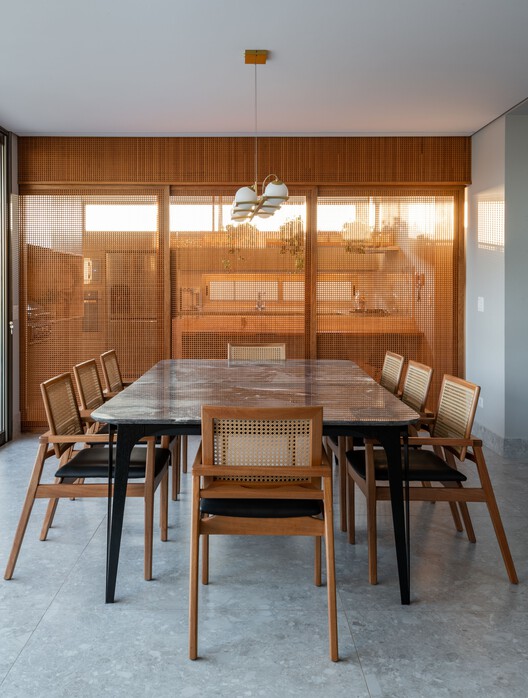
-
Architects: Cris Furlan Arquitetura
- Area: 350 m²
- Year: 2021
-
Photographs:Favaro Jr.
-
Manufacturers: Grupo Parana, Lumart, Portobello, REFAX, Rústika Marcenaria Nobre, Todeschini
-
Lead Architect: Cristiane Furlan

Text description provided by the architects. The Muxarabi House attracts attention for its singular volumetric form. Located at a condominium in the city of Piracicaba, in the state of São Paulo, it was planned for the owner and her two daughters. The uncomplicated yet impressive architecture of straight lines, the integrated spaces, and the connection with the exterior reflects the requests and lifestyle of the owner.

























